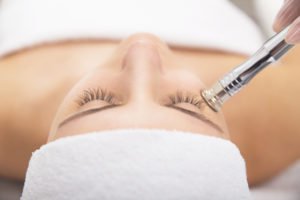
Just as each patient is different, the number of platelet-rich plasma (PRP) injections needed for knee pain may vary. Pilot and Feasibility Studies reports that for optimal results, initial treatment of platelet-rich plasma therapy should include three injections spanning over the course of three months. The University of Utah suggests that patients have been shown to find relief from PRP injections that last between one and three years.
According to Current Reviews in Musculoskeletal Medicine, PRP is a proven treatment method that is designed to promote tissue growth, reduce inflammation, and dissolve scar tissue. How many PRP injections are needed for knee pain will vary from one case to the next. If one is struggling with poor mobility, chronic pain, or other issues with their joints, PRP may be a viable treatment option.
Diagnosing Osteoarthritis in the Knee
Osteoarthritis results from damaged cartilage and tissue in the knee. It can lead to swelling and stiffness that can impair one’s free range of mobility. Unfortunately, it is just one of the many ailments that present themselves as one grows older.
The BMJ lists the following complications that osteoarthritis may cause in the knees:
- Chronic aches and pain
- Stiffness
- Limited range of motion as the condition progresses
- Poor balance that makes standing and walking difficult
- The need to use an assistive device (such as crutches or a wheelchair) to achieve movement
A HealthGAINS provider can accurately diagnose one’s condition through a physical examination, imaging scans, and other methods. If one is experiencing any complications relating to osteoarthritis, PRP injections may serve as an effective treatment method to reduce one’s symptoms.
Traditional Osteoarthritis Treatments Do Not Work for Everyone
The Mayo Clinic notes that traditional treatments for osteoarthritis can focus on two key areas: relieving pain or replacing the joint altogether. Some patients might be given over the counter medications, while others may be prescribed painkillers. These drugs are designed to promote short-term relief, as the everyday use of these medications may lead to addiction or organ damage.
Treatment can also include physical and occupational therapy. Physical therapy is intended to strengthen the joints and help one achieve a greater range of motion. Occupational therapy is designed to teach new ways to cope with pain by implementing certain adjustments to one’s lifestyle.
If none of these options provide effective relief, additional treatments can include cortisone or lubricant injections. Some people undergo surgery to completely replace the knee with artificial joints, risking the possibility of the device wearing away over time. The unfortunate reality is that these treatments do not work for everyone, or are not feasible alongside life’s current demands.
For a free consultation, call (305) 682-1818
Osteoarthritis Can Be Addressed Through PRP
The Centers for Disease Control and Prevention (CDC) reports that over 32 million people in the U.S. suffer from osteoarthritis-related pains. While there is no cure for this condition, however, there are treatment methods available designed to address its symptoms. BMC Musculoskeletal Disorders notes that diet and nutrition are important to managing osteoarthritis, and a diet of leafy vegetables and proteins may reduce one’s joint pain. Yet, because of health restrictions or other factors, this may not work for everyone. The growth factors in PRP address internal joint damage at its source, using chemicals from within the body to promote repair. A health care provider can provide further insight into one’s candidacy for PRP injections.
How PRP Treatment Allows the Body to Restore Itself
PRP injections are a non-surgical treatment method of providing relief from arthritis in the knees. This procedure takes less than an hour, allowing the modern person on the move to continue with their lives with little interruption.
At HealthGAINS, we put the needs and expectations of our clients at the forefront of our care. When one arrives for their procedure, they can expect white-glove service and hotel-inspired amenities during their time with us.
Upon arriving for PRP treatment, one can expect to have their blood drawn by a trained medical professional. The vial is then placed into a centrifuge, which works to separate growth factors and plasma from the sample. This highly concentrated formula is then reinjected into the knee’s problem area.
Because PRP treatment uses the body’s own healing response to reduce pain and inflammation, there are little adverse side effects. Again, depending on the extent of one’s condition, age, and expectations, a HealthGAINS medical professional will be able to assess how many injections will be necessary.
Contact HealthGAINS Today for More Information
Stiff, painful knees can make everyday life unbearable. It can also decrease one’s ability to participate in physical activities or engage in meaningful employment. There is no need to settle for a life marked with limited mobility and chronic pain. Our Wellness Advisors are standing by to answer any questions or concerns one may have regarding this cutting-edge treatment method. For more information about what PRP can accomplish, call (305) 912-8828.
Call or text (305) 682-1818 or complete a Free Consultation Form








